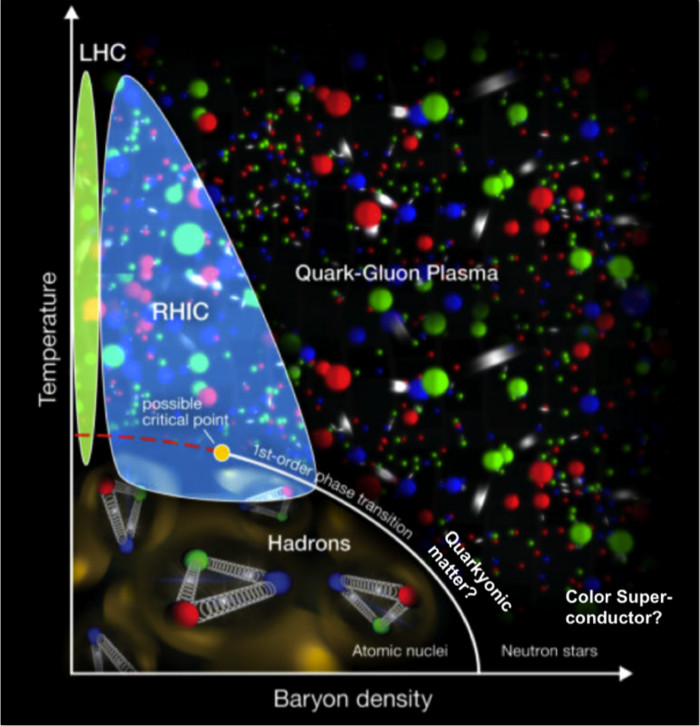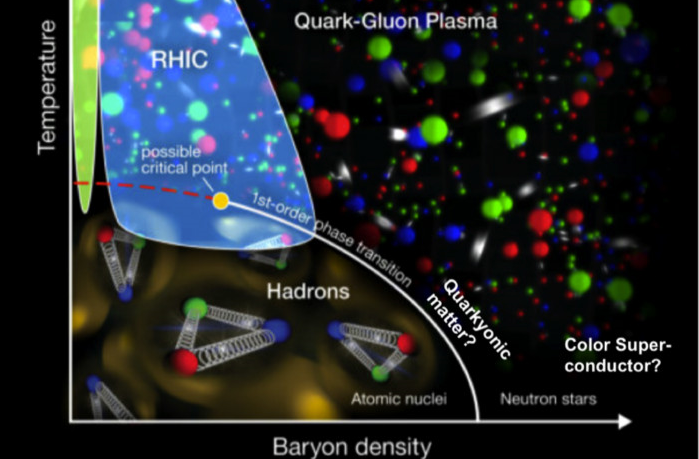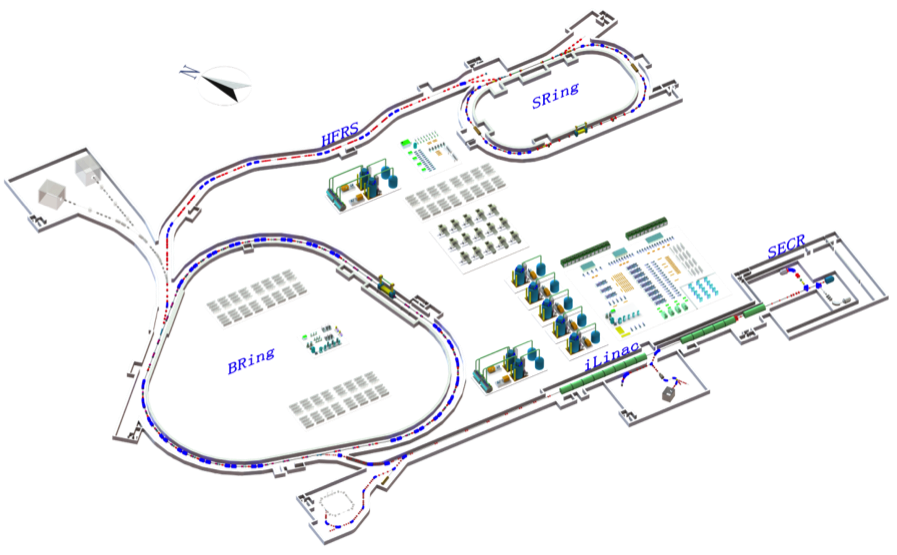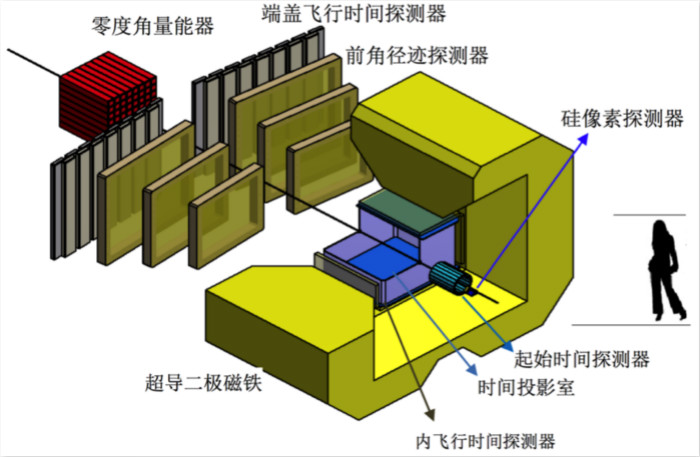Nuclear Matter Phase Structure Group
Brief Introduction
Like common matter (such as water), nuclear matter, described by quantum chromodynamics (QCD), may also have various different states and phase transitions among them, as shown in the figure below.

This phase structure of nuclear matter is our research focus. For example, at the extremely high temperature in the early universe, the quarks and gluons which are usually confined in hadrons (such as protons and neutrons) were liberated to form a new state of matter: Quark-Gluon Plasma (QGP). In the laboratory, we can use relativistic heavy-ion collisions to generate and study QGP. The QGP that we produced in the experiments can reach high temperature of several trillion degrees, which is the highest temperature ever produced by humans. Studies have found that QGP exhibits very low viscosity, which is close to the ideal fluid. Relativistic heavy-ion collisions also provide an ideal laboratory to study the effects of extreme environments such as extremely strong magnetic field (~ 1018 Gauss) and extremely high vorticity (~ 1022 s-1). With lower collision energies, the created nuclear matter have larger baryon density and baryon chemical potential, and there may be some interesting phase transitions, such as the first-order phase transition and critical point shown in the figure above.
The Nuclear Matter Phase Structure group studies the properties of QGP, the equation of state of nuclear matter, and searches for the first-order phase transition and critical point in the QCD phase diagram, with both theoretical efforts and heavy-ion collision experiments at home and abroad (e.g. HIAF-CEE and RHIC-STAR as shown below). These results will help understand the evolution of our universe from the Big Bang to compact stars (e.g. neutron stars).

Research Fields
Theoretical research on the phase structure of nuclear matter.
Construction of the CSR External-target Experiment (CEE). CEE is based on the large scientific facility HIRFL-CSR at IMP. In the near future, it can also be used at the HIAF facility, which is under construction by IMP at Huizhou, Guangdong province. It will be the first world-class large-scale nuclear physics experiment operating in the GeV energy region in China.
Participate in large international collaborations of heavy-ion collision experiments, such as the STAR experiment at the RHIC collider at Brookhaven National Laboratory in the United States, and the CBM experiment at the FAIR facility at GSI in Germany.
Achievements
Photos
Contact
Dr. QIU Hao
Email: qiuh@impcas.ac.cn
Mailing Address: 509 Nanchang Road, Lanzhou, 730000, China







 甘公网安备 62010202000713号
甘公网安备 62010202000713号


